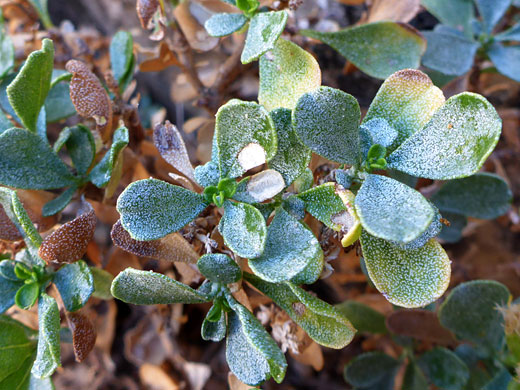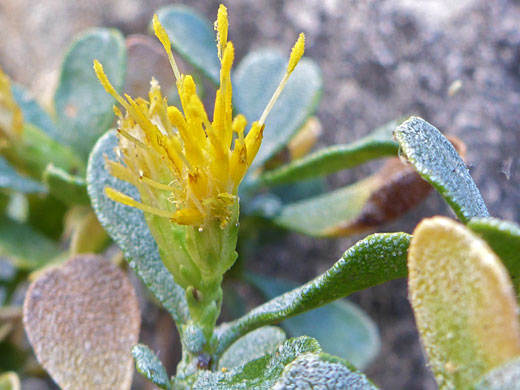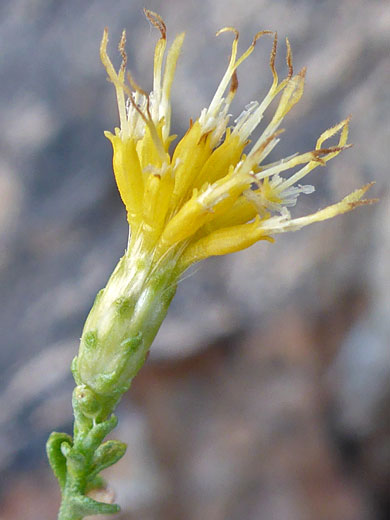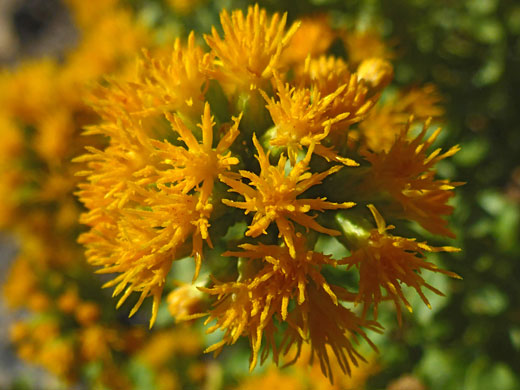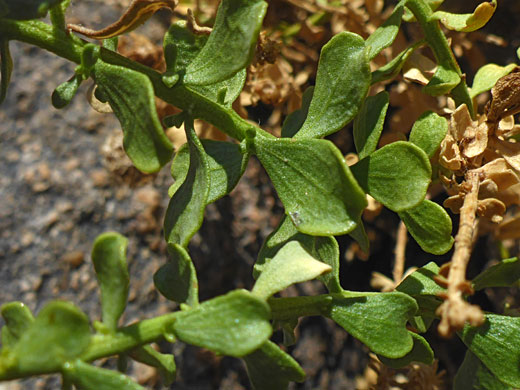Common name:
Wedgeleaf goldenbush
Family:
Scientific name:
Ericameria cuneata
Main flower color:
Range:
California, south Nevada and Arizona
Height:
Up to 3 feet
Habitat:
Washes, canyons, rocky places, up to 9,000 feet (for var cuneata)
Leaves:
Wedge- or spatula-shaped, up to 2 inches long and 2/3 of an inch wide, hairless, dotted with pit-like glands
Season:
July to November
All parts of ericameria cuneata are hairless. The wedge-shaped leaves are dotted with recessed glands, and have a rounded tip, sometimes with a small spike at the apex. Leaves are held outwards, or are ascending. The stem is much-branched.
Flowerheads are usually single, and they generally have disc florets only; occasionally up to seven ray florets may be present. The yellow disc florets vary in number from seven to 70; corollas are narrow and tubular, with exserted style and stamens. The small phyllaries, up to 60, obovate to lanceolate, are in several series, and may be subtended by up to ten scale-like bracts.
There are three varieties of ericameria cuneata; least widespread is var macrocephala, of San Diego County, California, which has a large number of disc florets, over 36. The other two have fewer than 33 disc florets - var cuneata with wedge-shaped, stalkless leaves, and var spathulata (the most common variety) with spatula-shaped, stalked leaves.
Flowerheads are usually single, and they generally have disc florets only; occasionally up to seven ray florets may be present. The yellow disc florets vary in number from seven to 70; corollas are narrow and tubular, with exserted style and stamens. The small phyllaries, up to 60, obovate to lanceolate, are in several series, and may be subtended by up to ten scale-like bracts.
There are three varieties of ericameria cuneata; least widespread is var macrocephala, of San Diego County, California, which has a large number of disc florets, over 36. The other two have fewer than 33 disc florets - var cuneata with wedge-shaped, stalkless leaves, and var spathulata (the most common variety) with spatula-shaped, stalked leaves.
All Contents © Copyright The American Southwest | Comments and Questions | Contribute | Site Map


